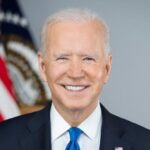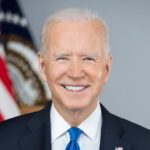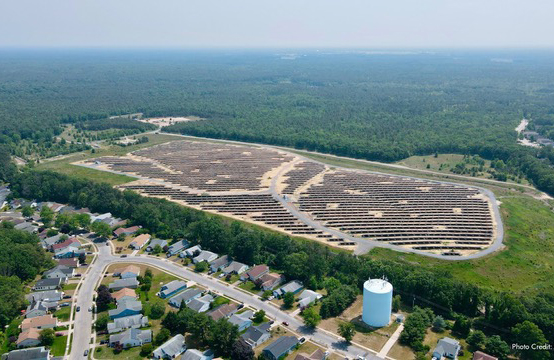Biden says four more years of imported solar panel tariffs, but bifacial get free pass
President Joe Biden today issued his decision to extend the safeguard tariffs on imported crystalline silicon solar panels for another four years. All traditional, monofacial solar panels imported into the country will be tariffed at 15% for the rest of this year, as confirmed by SEIA. The drop-down schedule should be 0.25% each year (14.75% in 2023, 14.5% in 2024 and 14.25% in 2025).
In a surprise deviation from the original Trump-era tariffs, Biden decided to exclude bifacial solar panels from the tariff. And the quota of crystalline silicon solar cells allowed to enter the country duty-free for domestic panel assemblers was increased from 2.5 GW to 5 GW.

Workers installing solar panels at Carver Houses, a New York City Housing Authority development in northern Manhattan. Photo credit: Accord Power Inc.
The tariffs were first enforced in 2018 as a way to prop up domestic solar panel manufacturing. U.S. companies said that cheap solar panels imported from other countries were hurting domestic manufacturing. With imported panels priced higher, domestic panels would better compete in the market.
The solar installation community, supported by advocacy group SEIA, has stated that the tariffs harm solar jobs, since solar panel prices are higher overall. Some projects are priced out, resulting in lost jobs.
“Under the Section 201 tariffs, America lost out on 62,000 solar jobs, including a net-loss of 6,000 solar manufacturing jobs. SEIA remains committed to growing domestic manufacturing, but tariffs aren’t the answer,” said Abigail Ross Hopper, president and CEO of SEIA, in a press statement prior to today’s decision.
While new module manufacturing facilities did open in the United States after the tariffs were first put in place in 2018, the country’s demand far exceeds domestic supply, and a significant amount of solar panels are still being imported. (See our list of U.S. module manufacturers here.) The United States is expected to install 30 GW of solar in 2022 and 32 GW in 2023. If working at full capacity, domestic panel manufacturers (including thin-film) can only supply less than 8 GW. And with no domestic solar cell manufacturers, all U.S. module makers must import crystalline silicon solar cells.
According to data provided by Customs and Border Protection, U.S. solar module assemblers did not meet the established 2.5-GW tariff-rate quota (TRQ) for solar cells the last four years — the country imported 2.311 GW of cells in 2020 and 2.098 GW through November 2021 (which further suggests that domestic panel companies are not producing anywhere close to 8 GW). That may change if/when new solar panel assembly companies open in the United States, as a number of new facilities were announced last year based on the expectation of receiving manufacturing tax credits as written in the Build Back Better Act, which of course has yet to pass.
The new tariffs go into effect February 7, 2022.
Section 201 solar tariffs history
In 2017, U.S. solar cell manufacturer Suniva and module maker SolarWorld (both of whom eventually filed bankruptcy) asked for a Section 201 of the 1974 Trade Act investigation by the U.S. International Trade Commission (ITC) to determine if cheaper imports of solar cells and panels were hurting the U.S. solar manufacturing market. The ITC did find that imported solar products were harming domestic manufacturing, and the Trump Administration placed tariffs on crystalline silicon cells and modules in 2018. The original tariffs were on a four-year step-down schedule: 30% tariff in 2018, 25% in 2019, 20% in 2020 and 15% in 2021. The first 2.5 GW of imported solar cells for U.S. panel assemblers were tariff-free each of the four years.

Q CELLS invested nearly $200 million to build a U.S. facility in Dalton, Georgia, which opened in 2019.
Various specialty solar panels were excluded from the tariffs including bifacial modules, which were initially excluded because there was no significant domestic manufacturing capacity of the specialty product. As bifacial modules grew in popularity, domestic panel manufacturers claimed that their exemption from the tariff was undermining the objectives of the original safeguard measure. The Trump Administration removed bifacial’s exemption in 2020, and increased the overall tariff drop-down rate for 2021 to 18%. In November 2021, the U.S. Court of International Trade (CIT) reinstated bifacial modules’ exemption and dropped the fourth-year tariff rate back to 15%.
Today’s extension came about after two separate petitions were filed with the ITC in August 2021 to extend the tariffs for four additional years: Auxin Solar and Suniva filed first with the request, and Hanwha Q CELLS, LG Electronics and Mission Solar jointly filed later the same week.
At a virtual ITC hearing in November, a number of companies provided testimonies as to whether they supported an extension. Unsurprisingly, almost all U.S. solar panel assembly companies were represented in the “pro-tariff-extension” camp, while installation companies backed by SEIA and the American Clean Power Association were vocally against any extension.
The ITC in December 2021 issued its remedy recommendation to the president, suggesting four additional years of tariffs, dropping by 0.25% each year, along with keeping the 2.5-GW annual TRQ on imported solar cells. Bifacial modules were not suggested to have a special exemption. The ITC board voted unanimously that tariffs continue “to be necessary to prevent or remedy serious injury and that there is evidence that the domestic industry is making a positive adjustment to import competition.”
Just last month, a group of bipartisan U.S. Senators wrote a letter to President Biden asking to not renew the tariffs. If tariffs were extended, the Senators requested “that you preserve the exclusion for bifacial solar panels and not apply the duties to imported cells, in order to help lower input costs for domestic panel manufacturers.” Ultimately, Biden decided to side with the installation community and exclude bifacial modules from the tariff.
SEIA president Hopper released a statement today:
SEIA has been fighting for more than three years to preserve the exclusion for bifacial panels, a product not available in the United States at scale. Today’s decision recognizes the importance of this innovative technology in helping to improve power output and lower costs in the utility segment. It is a massive step forward in producing clean energy in America and in tackling climate change.
We also support the administration’s decision to increase the tariff rate quota for solar cell imports. This will benefit both domestic module manufacturers and their customers in the residential, and commercial and industrial segments.
With this chapter behind us, now it’s time to roll-up our sleeves and help ensure the passage of long-term federal investments in domestic manufacturing and, in particular, the Solar Energy Manufacturing for America Act. This is how we will ensure the legacy of American solar manufacturing for many decades to come.
Andy Munro, general counsel for Q CELLS America, which has a 1.7-GW crystalline silicon solar panel assembly plant in Georgia, said that the bifacial exemption is a setback for domestic utility-scale panel manufacturers:
Solar in the United States is competitive even with a tariff in place so today’s decision to exclude bifacial panels, which account for the majority of all solar imports, will not increase solar deployment. Unfortunately, this decision will make it meaningfully harder to manufacture solar products in the United States. We encourage the White House to leverage tools like the Buy American Act to support domestic solar manufacturing and work with Congress to quickly enact the Solar Energy Manufacturing for America Act to ensure our clean energy future is made in America and diversify the solar supply chain.
George Hershman, CEO of SOLV Energy, the nation’s largest utility-scale solar installer, has been vocally against the tariffs but says today’s decision to at least exclude bifacial panels will be helpful for the utility-scale installation community.
Instead of creating barriers for renewable energy deployment, the solar industry needs an investment tax credit that will strengthen U.S. solar manufacturing and help us build a brighter future. I look forward to working with the Biden Administration toward that vision.
<!–
–>
Original Source: https://www.solarpowerworldonline.com/2022/02/biden-says-four-more-years-of-imported-solar-panel-tariffs-but-bifacial-get-free-pass/

















